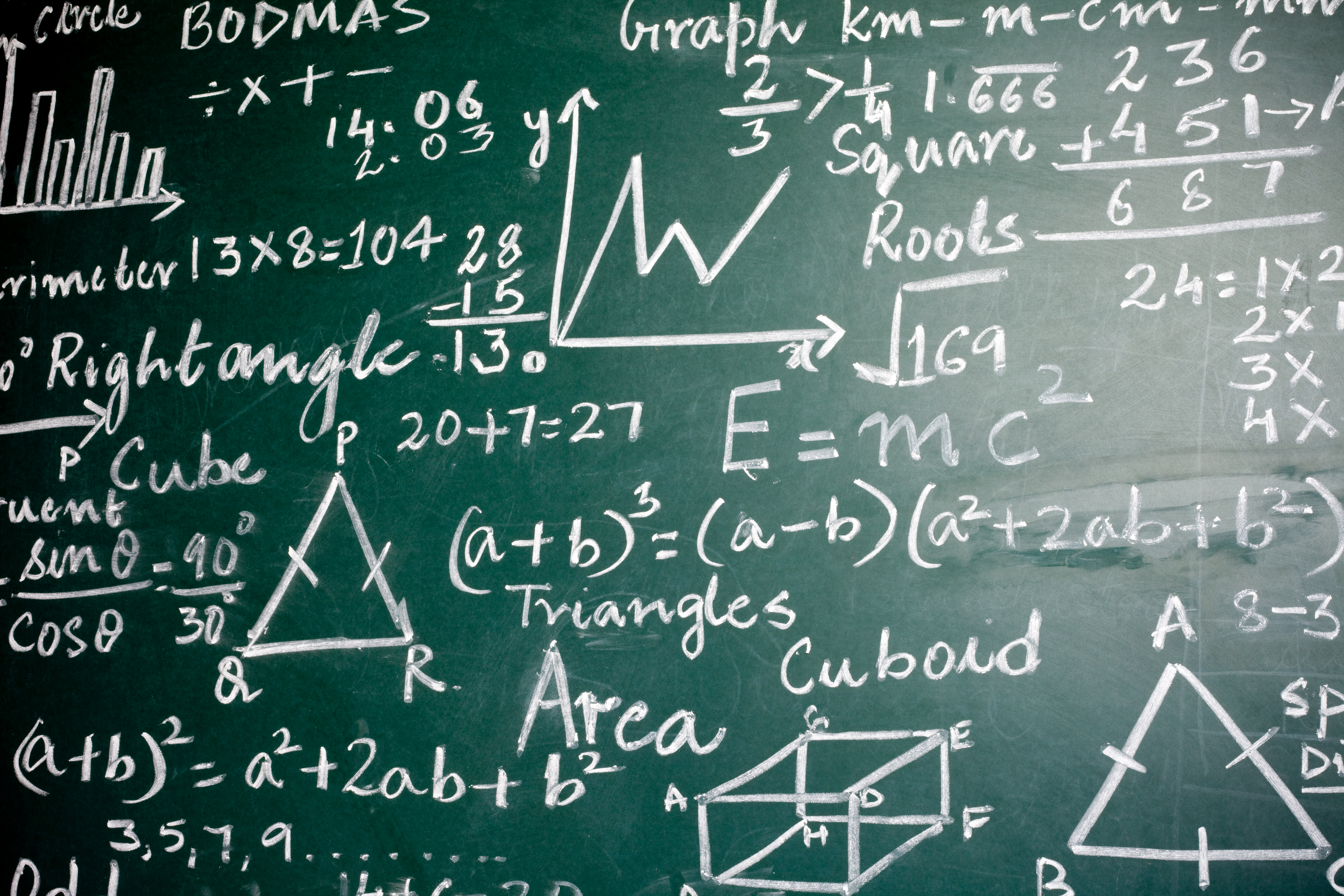Important GRE Math Formulas to Know Going Into the Exam
The Quantitative Reasoning section is just one of three parts of the GRE. In this section, you must answer algebra, arithmetic, geometry, and data analysis questions. In order to prepare for this section of the test, you should take time to learn some GRE math formulas, as these formulas aren’t provided on the test. Check out some examples of math formulas for GRE questions and get some tips on how to master this section of the exam.
Examples of GRE Math Formulas
-
Slope-intercept: y = mx + b
-
Distance = Rate * Time or D = RT
-
Average Speed = Total Distance/Total Time
-
For squares: Perimeter = 4s (side); Area = s2
-
For rectangles: Area = Length * Width or A= lw; Perimeter= 2l + 2w
-
For polygons: Total degrees = 180(n-2), where n = the number of sides
-
For circles: Area = πr^2 , Circumference = 2πr

Tips for the Quantitative Section
As you work through this portion of the test, it’s helpful to scan through the answer options and eliminate those that are clearly incorrect. Crossing out these options helps to make math problems more manageable. Plus, you don’t have to waste time considering answer options that are definitely not going to work.
A second tip is to work problems out on scrap paper. This is especially beneficial when working on word problems – you’re able to see all of the parts of a problem without having to mentally juggle a lot of figures. Furthermore, if you arrive at an answer that doesn’t match up with any of the options, you can go back to the work on the scrap paper to find the mistake.
You may also want to get into the habit of estimating the answer before considering any of the answer options. This gives you a rough idea of what the answer looks like before choosing the official solution from the multiple options.
In order to save test time, it’s also a good idea to skip extremely puzzling questions and return to them later on in the test period. Spending too much time on one problem in the quantitative reasoning section is likely to cause you to run out of time before finishing the rest of the section. If you take the computer-delivered version of the GRE, you will be able to use a convenient “mark and review” tool that helps you to remember the questions that you skipped and go back to them.
Studying for the Quantitative Section
Memorizing math formulas for GRE questions is just one of the effective ways to study for the GRE . Working on practice math problems is another way to prepare for the test. This gives you the opportunity to practice using those math formulas. As you work through a variety of problems, you’ll become familiar with when to use a particular GRE math formula.
Some students find it helpful to make flashcards with math formulas on them. You can quiz yourself by first holding up a flash card with a GRE math formula on it. Then, you should successfully complete a problem using that formula.
Online math games are another study tool used by many students. Games can be a fun way for you to refresh your algebra skills or get reacquainted with the rules of geometry. Some students like to pair with another person to play these types of math games. Competing with a friend to see who can score more points and end up with more correct answers can be motivating to many students who plan to take the GRE. Plus, it’s always helpful to hear encouraging words from a friend.
All of our GRE instructors at Varsity Tutors have taken the exam and achieved impressive scores. They are familiar with the subtleties of this challenging test. In short, our students learn from instructors who know what it takes to master the Quantitative Reasoning section as well as the other sections on the GRE. Our instructors help students to learn the math formulas they need to know to take on the test with confidence. We offer in-person and online courses in which students can get test-taking strategies from the experts. Contact Varsity Tutors today!
Want to jump-start your GRE preparation? Check out our variety of GRE Course and Private Tutoring options.